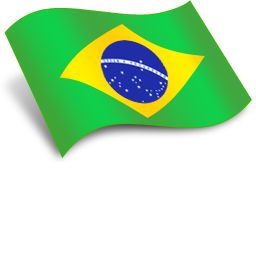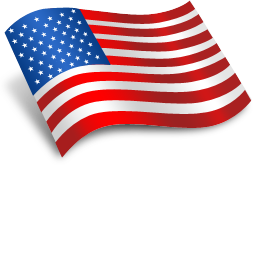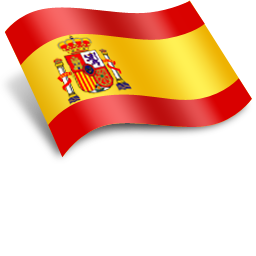The Southern Common Market - MERCOSUR is a customs union established by the Treaty of Asunción, signed on 03/26/91, by Argentina, Brazil, Paraguay and Uruguay, with the aim of promoting the development of the four countries by forming an economic space expanded, and consequently, a more competitive insertion in the world economy.
What is the legal basis MERCOSUR in Brazil?
Decree No. 350 of 21/11/91 - promulgates the Treaty of Asunción;
Decree No. 922 of 10/09/93 - promulgates the Brasilia Protocol signed on 17/12/91, laying down different steps and procedures for resolving disputes in MERCOSUR, and
Decree No. 1901 of 05/09/96 - promulgates the Ouro Preto Protocol, signed on 17/12/94 that defined the institutional structure of MERCOSUR and gave the South American bloc legal personality under international law.
What is the purpose of MERCOSUR?
The establishment of a common market among member countries through:
• Free movement of goods, services and factors of production;
• Elimination of tariff and nontariff barriers on trade among member countries;
• Adoption of a Common External Tariff (CET);
• Coordination of macroeconomic and sectoral policies
What countries make up the MERCOSUR today?
Only the signatories of the Treaty of Asunción: Argentina, Brazil, Paraguay, Uruguay and Venezuela (in the accession process). Chile and Bolivia participating as members of the block, because each of them signed with MERCOSUR broad free trade agreements in 1996.
What is the institutional structure of MERCOSUR?
• With the signing of the Protocol of Ouro Preto, on 17/12/94, MERCOSUR established its institutional structure as follows:
• Common Market Council (CMC), higher body responsible for driving the process of political integration;
• Common Market Group (GMC), the executive body that takes the necessary measures to implement the decisions adopted by the Council and establishes work programs to ensure progress towards the establishment of the Common Market;
• MERCOSUR Trade Commission (CCM), the agency responsible for assisting the GMC, having among its powers to ensure the implementation of the common commercial policy instruments in the States Parties to the functioning of the Customs Union;
• Joint Parliamentary Committee, the representative body of the Parliaments of the States Parties, with the task of speeding up procedures for the early entry into force of the rules issued by MERCOSUR organs;
• Economic-Social Consultative Forum, the representative body of the economic and social sectors;
• Administrative Secretariat, to provide operational support, based in Montevideo, Uruguay.
What is the instrument that regulates the trade in MERCOSUR?
The Economic Complementation Agreement - ACE No. 18, signed on 29.11.91 and implemented in Brazil by Decree No. 550, dated 27/05/92. The text of this Agreement and its protocols modifiers can be found on the Internet at the following addresses: www.mercosur.org.uy and www.aladi.org.
What is the common external tariff (CET)?
It is the pillar of the Customs Union. The TEC is composed of the MERCOSUR Common Nomenclature (NCM) code and description, and the rates of import duty, having been implemented by States Parties from 01.01.95.
Due to this implementation, all products imported from non-participating countries of MERCOSUR are subject to the same rate of import duty by being internalized in any of the States Parties. Some products are excepted temporarily TEC, for certain periods.
http://www.desenvolvimento.gov.br/sitio/interna/interna.php?area=5&;menu=3361.">The TEC both in Word and in Excel version is available at the address http://www.desenvolvimento.gov.br/sitio/interna/interna.php?area=5&;menu=3361. 8. What are the lists of exceptions to the common external tariff? The list of exceptions to the CET has been used by the MERCOSUR countries from the beginning of his term to give differential tariff treatment to certain products for which the TEC can not be applied momentarily.
In Brazil and Argentina, such exceptions include an exception list with 100 items for each State Party and other Goods Computer and Telecommunications that may be maintained until 31/12/2015. to Paraguay, and Uruguay to 31/12/2019 until 31/12/2017.
http://www.desenvolvimento.gov.br/sitio/interna/interna.php?area=5&;menu=3361 9.">Are also available from SECEX the address http://www.desenvolvimento.gov.br/sitio/interna/interna.php?area=5&;menu=3361 9. What is the common nomenclature MERCOSUR? It is the nomenclature used by all States Parties in foreign trade operations, replacing the former national classifications. The Mercosur Common Nomenclature-NCM is based on the Harmonized Commodity Description and Coding System - SH, the World Customs Organization - WCO, having eight digits, the first six of which belong to the Harmonized System and are common to all classifications modern.
What is the structure of the harmonized description and coding of goods?
The Harmonized System distributes the objects of international trade products in 21 sections and 96 chapters, considering the specificities of the products, such as its origin (animal or plant), constituent material, application, and other parameters that may characterize the products. This system follows a logical numeric-increasing according to the level of sophistication of the product.
The NCM can change?
Yes Changes may occur as a result of decisions of the Harmonized System Committee of the WTO, which enhances the HS every 4 years, or by internal decisions of MERCOSUR, by request due to the private sector or government agencies. Generally, for opening specific item that meets the interests of the industry or need for statistical transfer, and also for modernization of the classification due to technological advances.
The rates of the common external tariff can be changed?
Yes, the rates can be changed at the request of any State Party or private sectors, according to the criteria adopted for the preparation of the TEC. The order of increase in rates designed to protect the new regional productions. Requests for reduction are related to goods which are not produced regionally and aim to reduce the costs of internalization of these products.
How applications may be made to amend the NCM and the TEC?
Requests for changes in rates of TEC or the MERCOSUR Common Nomenclature must be submitted to the Department of International Negotiations-DEINT, according to the form approved by MERCOSUR. http://www.desenvolvimento.gov.br/sitio/interna/interna.php?area=5&;menu=1849.">Further information can be obtained on http://www.desenvolvimento.gov.br/sitio/interna/interna.php?area=5&;menu=1849.
If a Brazilian company want to export to any of the member countries of MERCOSUR, which must adopt specific procedures?
The procedures are those common to any export operation, and, in the case of exports to MERCOSUR, the exporter when the export registry should indicate the code ACE No. 18, available at SISCOMEX.
Finally, the exporter must provide a Certificate of Origin to be sent to the importer. This certificate may be obtained in the entities accredited by the Association for Latin American Integration Association - LAIA. The full list of entities is available at the following address: www.desenvolvimento.gov.br.
For Brazilian products to circulate freely import tariff within MERCOSUR must be fulfilled some requirement?
Yes, the product must be accompanied by a certificate of origin from MERCOSUR. To do so, you must fulfill certain requirements to be considered as originating in one of the States Parties to the block.
What the nationalization index of MERCOSUR?
In accordance with the Rules of Origin MERCOSUR, the goods have to comply with regional content index must observe the percentage of 60%. This calculation is done considering that the CIF price of imported materials does not exceed 40% of the fob export price of the final good.
As being conducted operations "drawback" in MERCOSUR?
According to Article 2 of Decision CMC 69/00 operations "drawback" and temporary admission for intra-MERCOSUR are authorized until 31/12/2016, subject only to compliance with the national legislation in force in each State Party .
How to proceed to the Brazilian exporter if your merchandise suffer some restraint on the part of any member country of MERCOSUR?
Must inform their difficulties to the Department of International Negotiations SECEX to refer the matter to the National Section of the Trade Commission of MERCOSUR - CCM for examination. In its proceedings, the CCM, intergovernmental body responsible for ensuring the implementation of trade policy instruments in the Customs Union established a mechanism for consultations, which, in short time, can resolve issues arising from restrictions identified in trade between members.







